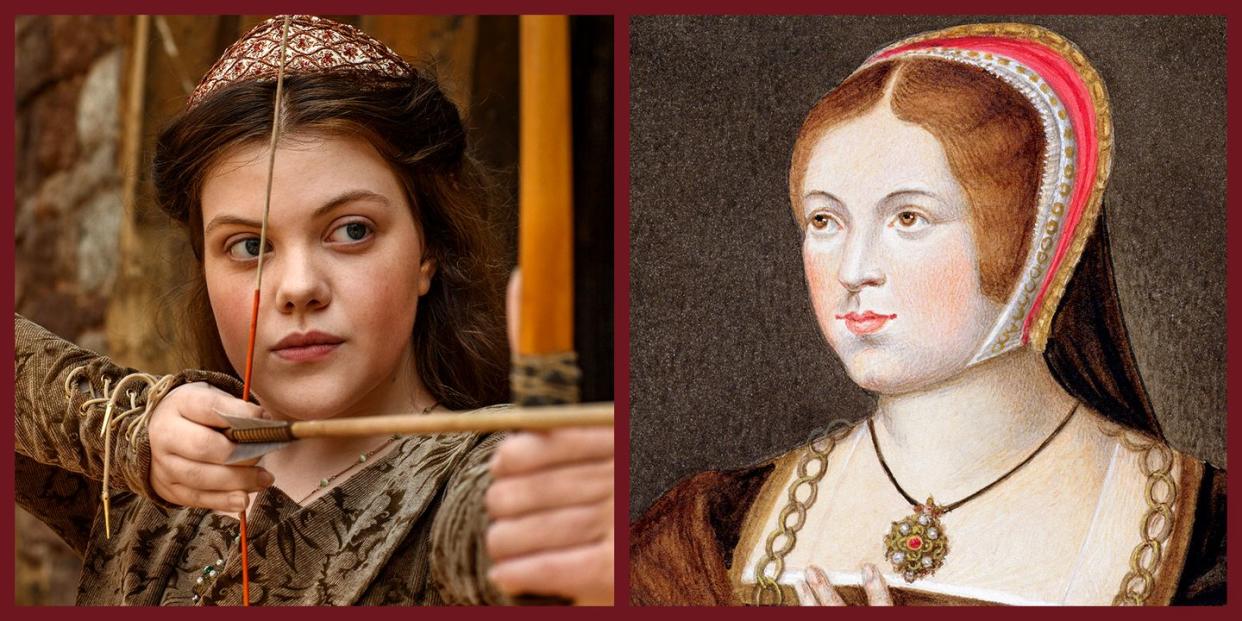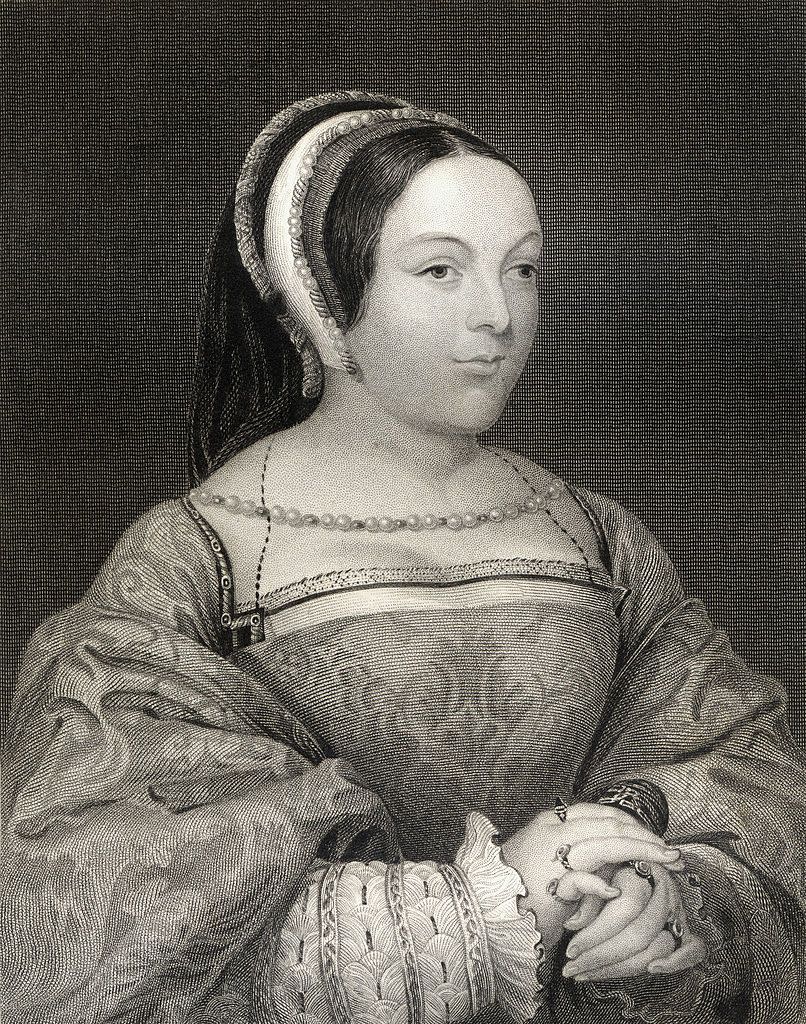How Margaret Tudor Became One of the Most Influential Queens in British History

Here at T&C, we've fallen fast for the Starz period drama The Spanish Princess, which follows Catherine of Aragon's ill-fated romance with Henry VIII.
One character in particular that caught our attention is Margaret Tudor, Arthur and Harry's younger sister, played by Georgie Henley of Chronicles of Narnia fame. Through multiple marriages, a coup d'etat, and some political backstabbing, she became the Queen of Scotland, and her actions eventually led to the unification of the English and Scottish kingdoms. Here's everything you need to know about Margaret Tudor.
As a princess, her future was pre-determined by marriage.
Margaret was born to King Henry VII and Elizabeth of York in 1489 at Westminster Palace. She was the second of four siblings; her older brother was Arthur Prince of Wales, her younger brother was Henry (who became Henry VIII), and her younger sister was Mary (who became Queen of France briefly). As the eldest daughter in the family, Margaret's marriage would be a vital source of political power, and wedding discussions began early in her life.
Margaret reluctantly married James IV of Scotland at age 14. (He was 30.)
In the first few episodes of The Spanish Princess's first season, we learn that Margaret isn't thrilled about the idea of leaving her family behind and marrying a man more than twice her age, and she confides in Catherine, who understands how it feels to be married off strategically.
@geohenleyreal is the freaking best. Ep 2 coming on Sunday !! pic.twitter.com/eQc2P9sBki
— Charlotte Hope (@charlottehope8) May 10, 2019
In real life, Margaret's marriage to James IV did take place in 1503, one year after Scotland and England signed the Treaty of Perpetual Peace (with the marriage as a condition of the treaty). It was the first peace agreement between the two countries in more than 170 years. Sadly, Margaret's mother died the same year as her nuptials.
Margaret had six children with James, only one of whom survived into adulthood.
Unfortunately, the rates of infant and childhood mortality were higher during Margaret Tudor's lifetime, and five of her children, including her first son, James, the Duke of Rothesay, died before the age of 2. Her fourth child, who went on to become King James V of Scotland, was the only one to survive childhood, and lived to be 30 years old.

Margaret briefly became Queen Regent of Scotland in 1513, when her husband died in battle—fighting against her brother, Henry VIII. Then, things got even more complicated.
That peace treaty turned out to be not so perpetual after all. Ten years after its signing, Henry VIII was on the throne, and poised to declare war against France. Margaret's husband, James IV, was bound by Scotland's 200-year-old alliance with France, and chose to fight alongside them and against England. He was killed in the Battle of Flodden, and thus Margaret became Queen regent, reigning temporarily on behalf of her infant son, James V. It was a position she could hold so long as she remained unmarried.
Margaret served as Queen regent for just over a year and was known to have been a deft politician, dealing with the various tensions between the Scots, French, and English. But, her secret marriage to Archibald Douglas, the earl of Angus, in 1514, angered the Scottish Parliament, as the couple was seen as being loyal to England. And, by getting married, she threatened her status as Queen regent. (They had one child, also named Margaret, in 1515.)
Margaret was removed from power and forced into exile while John Stewart, the Duke of Albany—a pro-French, anti-England noble favored by Parliament, who also happened to be Margaret's late husband's cousin—took over as regent for her son, James V.

Ultimately, Margaret's son would reign as King James V. But not without some backstabbing and scandal.
When the Duke of Albany was away in France in 1525, Margaret brought her 12-year-old son James to the Scottish court and he was installed as reigning king. Because she was still technically married to Angus, some court advisors wanted Angus to supervise the young monarch. Angus came back to the court of Scotland, much to Margaret's chagrin. The two were locked in a power struggle for several years over the young James's rule. In 1528 when James was 16, he managed to get Angus kicked out of the court; Margaret and Angus's divorce was finalized; and she quickly married her lover Henry Stewart. At that point, James also began to reign on his own.
Margaret died before the crowns of Scotland and England came together, but her actions led to the unification of those two kingdoms.
Margaret died in 1541 at age 52 from a palsy-related illness. The Tudor dynasty ended with in 1603 when Queen Elizabeth I died without any heirs to the throne. Thus, Margaret and James's great-grandson James VI became the King of England, in what is called the "Union of the Crowns."
Throughout all the turmoil, Margaret stayed true to her vision of maintaining a tenuous peace between her home country of England and her adopted country of Scotland, while also securing her family's legacy.
You Might Also Like


